Conventional frog terrariums lack the natural feel and are usually tainted with the need for frequent washing. But wait, let me introduce you to the superior method! Bioactive vivariums are miniature ecosystems similar to your frog’s habitat to ensure it thrives.
Content Table
This article is your ultimate source of information to set up a frog bioactive vivarium perfectly. Everything you need to know about the best light and best plants for a bioactive vivarium and care for the plants will be discussed here.
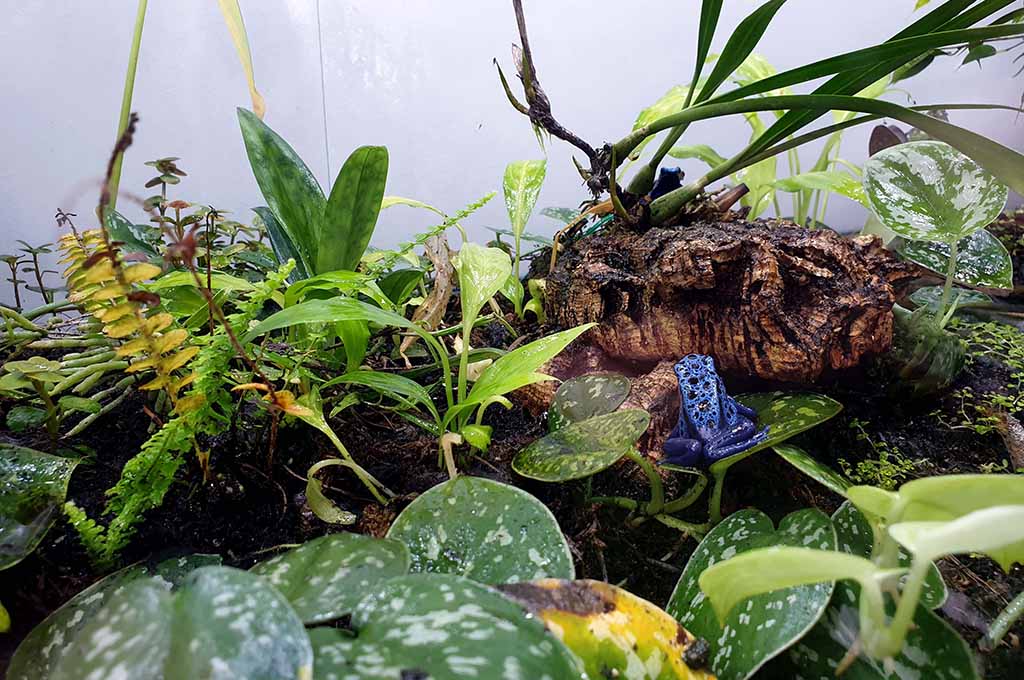
Best plants for a bioactive vivarium
Frog Vivarium
A frog vivarium is usually an enclosed area that models the natural habitat of your chosen type of frog. It is even more advanced than a glass terrarium, with included live plants and a special substrate containing little clean-up crews. This forms a bioactive vivarium, a space that maintains its ecosystem just like a jar of rainforest.
Features of the Bioactive Vivarium
- Live plants: These give the frogs some places to hide, increase the level of humidity, and even allow the frogs to excrete some of their waste.
- Substrate: Bioactive substrate is a mixture of soil, sand, and other organic content that hosts several beneficial microorganisms. They contribute to the degradation of waste products and contribute to the sanitation of the vivarium.
- Isopods and springtails: These small animals are referred to as “cleanup crews” because of their diet which includes dead leaves, frog droppings, and other forms of debris. They assist in maintaining high hygiene levels of the vivarium and reducing the formation of pathogenic bacteria.
- Proper ventilation: A bioactive vivarium must have proper air circulation to avoid humidity and the presence of mold. This is usually done by putting the mesh screen panels at the top or other parts of the enclosure.
Best Light for Bioactive Vivarium
The following factors need to be considered for Bioactive Vivarium lighting:
Light Spectrum: Look for a full spectrum light that covers a wide range, with special emphasis on a blue light range of 430-460nm and a red-light range of 640-670nm important for plant growth.
Light Intensity: The intensity of light required in such systems depends on the kind of plants that are being grown. Low-light plants can be grown with weak lamps, while high-light plants will need strong lamps. Once you have selected the plants you want to grow, find out how much light they require.
Daylight Cycle: Imitate natural day/night conditions and ensure that the lighting is approximately 12-14 hours and darkness is roughly 10–12 hours each day. Interestingly, light timers can assist in automating it.
Types of Lighting
LED Lights: These are the most popular lighting choices today because of their energy consumption, extended product life, and heat emission. Search for full-spectrum LED lights, in the range of 5200K to 7000K, as they provide multiple light spectrums that plants need and do not heat the vivarium much.
T5/T8 Fluorescent Lights: These are a good alternative to LEDs, especially the T5HO (High Output), which is brighter than the previous option. However, fluorescent bulbs are slightly less efficient in terms of energy use and bulb life compared to incandescent.
Halogen Lights: Halogens are slightly brighter than LEDs, but they are known to generate heat and should be handled carefully in order not to overheat the vivarium. Bio-actives usually do not support BGs and MHPs and are generally best used in lakes.
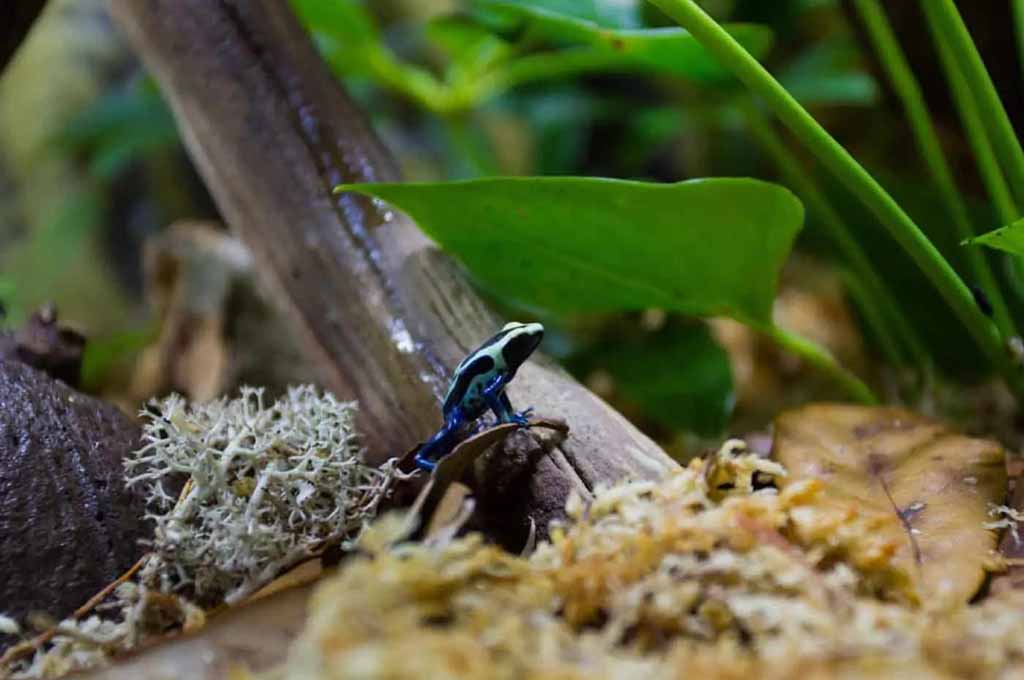
Set up frog bioactive vivarium
Set up Frog Bioactive vivarium
Creating a thriving bioactive vivarium for your frogs requires thoughtful planning and execution. Here are the steps to keep in mind:
Choosing the Right Enclosure
- Size: Identify the correct sort of vivarium that compliments the type of frog that one has. Consider their prospective sizes as adults and how active they are at their optimum. The arboreal frogs are best housed in taller enclosures that have some branches with more vertical space than the terrestrial frogs that need more floor area.
- Material: It is preferred to use glass or acrylic since it’s easy to clean and gives a clear form of barrier between aerosol and any person. They recommended using nylon screens to ensure that there is cross-ventilation in the vivarium.
Researching Frog and Plant Needs
- Frog Species: Further, it will be necessary to obtain much more specific characteristics of the temperature, humidity, and other conditions for the given kind of frogs.
- Plant Selection: Ensure that the plants are local to the frog and can be well managed within the size and the lighting that the vivarium offers. To understand the kind of light they would prefer, as well as the level of humidity that they would wish to endure.
Preparing the Background (Optional)
- Apply a background material like cork bark or expanding foam to create a natural aesthetic and additional climbing space. Seal the background with a non-toxic waterproof sealant to prevent mold growth.
Drainage Layer
- Create a false bottom using mesh or egg crate to separate the substrate from the drainage layer.
- Add a layer of inert materials like hydroton pebbles or broken clay pots to promote drainage and prevent waterlogging.
Substrate Barrier
- Separate the drainage layer from the substrate layer with a weed barrier or mesh to prevent the substrate from mixing with the drainage layer.
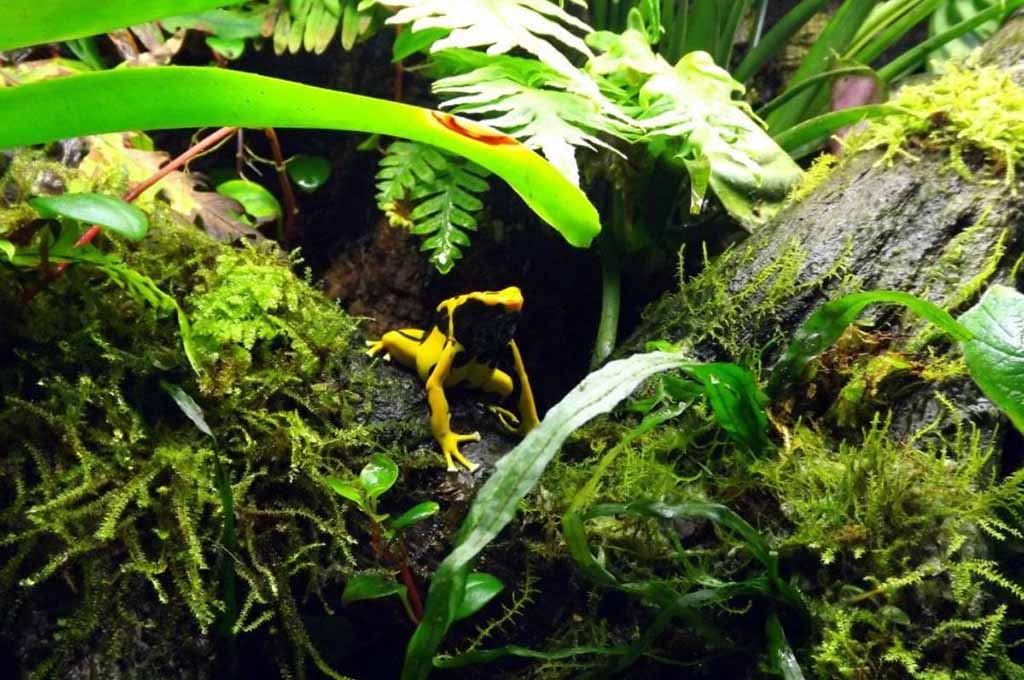
The best light for a bioactive vivarium
Bioactive Substrate
- Here’s where the magic happens! A bioactive substrate is a carefully chosen mix that promotes beneficial microorganisms and helps break down waste.
- Common substrate components include:
| Organic topsoil: Provides nutrients and supports plant growth. | Coconut coir: Retains moisture and helps create a burrowing medium for some frog species. |
| Reptile bark: Improves drainage and aeration. | Sand: Adds structure and drainage (use sparingly for most frog species). |
Several pre-mixed bioactive substrates are available commercially, or you can create your own following a trusted recipe.
Hardscaping and Décor
- Here’s where you get creative! Use cork bark, driftwood, rocks, and live plants to create a visually appealing and stimulating environment for your frog.
- Ensure all hardscape elements are secured properly to prevent them from collapsing and injuring your frog.
Planting
- Plant your chosen flora strategically, considering their light and moisture needs. Group plants with similar requirements together.
- Live plants not only enhance aesthetics but also provide hiding spots, maintain humidity, and help cycle waste products.
Installing Lighting
- Choose a full-spectrum LED light suitable for your plants’ needs. Consider the vivarium size and distance between the light and plants for optimal coverage.
- Set the lighting on a timer to mimic a natural day/night cycle (around 12-14 hours light, 10–12 hours dark).
Adding Isopods and Springtails
- Introduce a colony of isopods (dwarf white isopods are popular) and springtails. These tiny “cleanup crew” invertebrates will help break down waste products and maintain a healthy ecosystem.
Setting Up Water Features (Optional)
- Depending on your frog species, you might include a shallow water dish or create a bioactive water feature with a waterfall or pond area using a water pump and filtration system.
Monitoring and Maintenance
- Regularly monitor temperature, humidity, and plant health. Mist the vivarium as needed to maintain humidity levels.
- The established bioactive ecosystem should require minimal maintenance, but occasional spot-cleaning of waste and dead plant matter may be necessary.
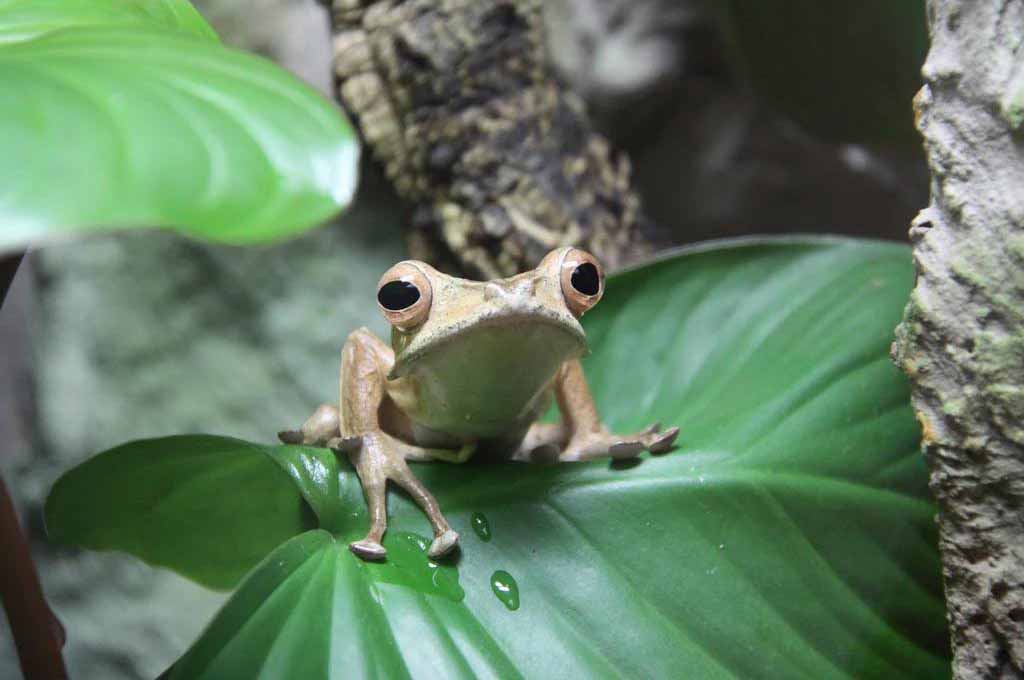
Bioactive vivarium
After the Frog Bioactive Vivarium Building
Finally, when you have built your bioactive foggy paradise, the next step is to be patient! Please wait for at least a few weeks for the vivarium’s ecosystem to set itself up. Check the temperature, humidity, and condition of plants, and mist when necessary. This is the time you can show your perfectly healthy frog along with its isopod and springtail janitors and watch the magic of a cycle that sustains itself.
Key Takeaways
- A bioactive vivarium is a self-sustaining ecosystem that mimics a frog’s natural habitat.
- It includes live plants, bioactive substrate, isopods, springtails, and proper ventilation.
- LED lights are ideal for the vivarium due to their energy efficiency and minimal heat emission.
- When setting up a bioactive vivarium, consider the frog species’ needs, plant selection, and drainage.
- After building the vivarium, wait a few weeks for the ecosystem to establish itself before introducing the frog.
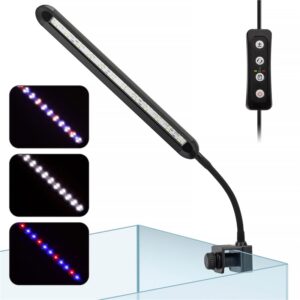
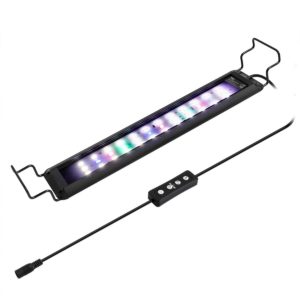
Leave a comment